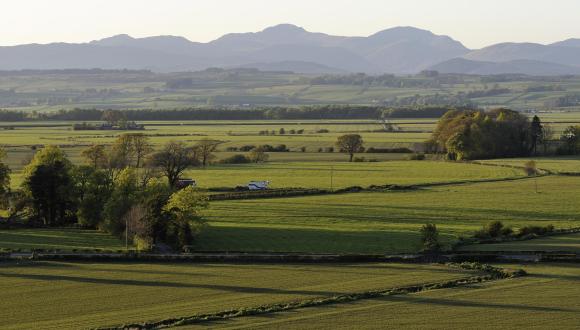Natural Capital Assessment Template - Case Study - Integrating livestock in arable rotations

Background
Arull Farm is an arable farm in the Scottish Borders. The farmer has about 120 ha owned and 51 ha of tenanted land. Primarily the business is focussed on growing malting barley, however, a couple of years ago, they decided to incorporate livestock into their arable rotation. Incorporating livestock into the arable rotation can bring multiple advantages, and there are two primary ways of doing so: (1) planting grass and clover ley and (2) planting cover crops.
Approach
In this case, the farmer decided to plant a grass and clover ley and he bought in a flock of sheep to graze off the ley. He has found that the leys can be an effective way of managing weed problems and building fertility within the arable rotation. Turning over arable fields to grass can significantly reduce the black-grass burden as black-grass seed is relatively short lived in the soil. If black-grass seed return is prevented by grazing a grass ley, the seed bank declines rapidly. Including clover in the ley seed mix has also fixed additional nitrogen and grazing adds organic matter, providing a food source for soil organisms and improving soil structure.
Cost and benefits
Taking land out of arable cultivation and putting it into a mixed legume and grass herbal ley has reduced the overall arable rotation gross margin on this farm. However, this has been more than compensated for by the reduced variable costs and increased yield of the arable crops in the new rotation, combined with the gross margin of the sheep enterprise.
|
Annual Marginal Costs |
Per Hectare (£) |
|---|---|
|
Reduced arable gross margin |
173.82 |
|
Total |
173.82 |
|
Annual Marginal Benefits |
- |
|---|---|
|
Additional gross margin from spring lambing sheep enterprise |
182.04 |
|
Total |
182.04 |
|
Annual Marginal Cost: Benefit |
8.22 |
There are other natural capital benefits, in terms of improved soil, water and nutrient cycling, due to increased soil organic matter. This has benefits in terms of reduced soil erosion and increased resilience against excess rainfall and drought.
Challenges
There are a few things the farmer had to consider when incorporating sheep into his rotation:
Species and varietal selection is really important for any ley or cover crop mix. Buckwheat, for example, is poisonous to sheep, and phacelia – a quick growing, annual green manure – has poor palatability
Some ley varieties perform better under silage than under grazing and vice versa. Therefore, it is important to consider whether the grass ley will be mostly cut or mostly grazed.
Growers need to be mindful of the interaction between some crops – for example, when oats or rye are in the mix, it can delay growth in a following spring barley crop.
With new leys, the lightest class of stock should be used for the first grazing, to minimise any potential soil compaction, overgrazing or poaching.
Poaching and shallow compaction can be a problem around tracks and water troughs, especially on heavier soils; this can be alleviated by a short, sharp grazing regime, to ensure even grazing without poaching.
More information
- FAS Regenerative Agriculture – Integrating Livestock
- Farming for a Better Climate: Regenerative Agriculture: Integrating livestock
- SRUC (2016) Valuing Your Soils: Practical guidance for Scottish farmers




